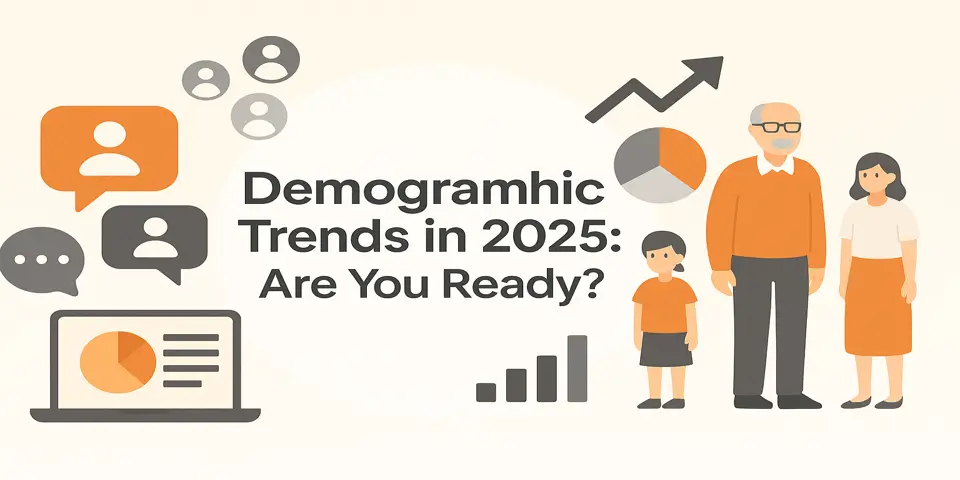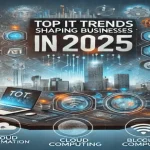15 Min To Decode Demographic Shifts in 2025
Introduction:
Picture this: It’s 2025, and ignoring consumer demographics in 2025 has stalled your growth. Your once-reliable audience shifted, but consumer demographics in 2025 reveal where demand has moved. Competitors who studied consumer demographics in 2025 gained the edge. Staying informed on consumer demographics in 2025 opens new growth paths. Don’t get left behind—act on consumer demographics in 2025 now.
Table of Contents
In this blog, we’ll explore the demographic trends of 2025, decipher how they impact your business landscape, and offer strategic steps to future-proof your enterprise. As a team passionate about digital transformation and business growth, SySpree stands ready to help you navigate these changes with agility and foresight.

The Goldmine of Demographic Trends
The essence of consumer demographics in 2025 is understanding how people drive change. As age, gender, and culture shift, consumer demographics in 2025 reveal evolving needs. Smart brands track consumer demographics in 2025 to stay relevant. Every trend you follow should reflect consumer demographics in 2025 insights. Here’s what’s key: act on consumer demographics in 2025, not assumptions.
1. Aging Population: An Emerging Market
By 2025, the global aging population will skyrocket. The World Health Organization projects that by 2025, there will be approximately 1.2 billion people over the age of 60. This demographic will drive market demands for healthcare, lifestyle products, financial planning, and convenience services.
Pain Point: Ignoring this trend means missing out on a lucrative customer base with growing purchasing power.
Solution: Create products and services tailored for older adults, such as simplified technology, healthcare solutions, and eco-friendly products. Marketing campaigns that speak directly to the values and needs of this group can also capture their loyalty.
Case Study: Consider a fitness brand that shifted focus toward low-impact exercise equipment and online classes targeting seniors who prefer home-based workouts. This pivot led to a 30% increase in revenue and a substantial new customer base.

2. The Rise of Millennials and Gen Z: Digital Natives Drive Change
Millennials and Gen Z are becoming the dominant consumer groups, bringing their digital savviness and values to the fore. By 2025, these groups will comprise nearly 60% of the global workforce, wielding significant economic influence.
Pain Point: Failure to cater to these digitally-native groups could result in brand obsolescence.
Solution: Invest in digital transformation and sustainable practices. Emphasize authenticity and social responsibility in your branding and communications to build trust and engagement with these generations.
Narrative: Think of a tech company that embraced sustainable development and transparency. By aligning with Millennial and Gen Z values around eco-friendliness, the company saw its market share triple within five years.
3. Urbanization and the Move to Mega Cities
With over half of the world’s population living in urban areas, the mega-city trend is expected to continue. Urbanization brings about new challenges and opportunities, such as infrastructure strain but also increased consumer concentration.
Pain Point: Failing to urbanize your strategy may restrict growth in densely populated areas.
Solution: Expand distribution channels, adapt product offerings to urban lifestyles, and ensure your marketing resonates with city dwellers.
Example: A food delivery service optimized its logistics for urban centers by partnering with local producers, ensuring freshness, convenience, and speed. This focus on urban quality of life boosted their appeal and market share.

Strategies to Stay Ahead of Demographic Shifts
1. Marketing with Precision: Demographic Targeting
Demographic targeting remains essential for maximizing reach and relevance. At SySpree, we emphasize sophisticated data analytics to understand user behavior and preferences, allowing for personalized marketing campaigns that resonate with your target audience’s specific needs.
Actionable Tip: Use platforms like SySpree to integrate AI-driven insights into consumer behavior, ensuring your message reaches the right audience at the right time.
2. Leveraging Data-Driven Insights
Data is the cornerstone of understanding your market’s evolving demographics. Adopting data analytics tools enables you to proactively adjust your strategies based on real-time consumer insights.
Insight: Businesses aligning their strategies with data-driven insights are 2.7 times more likely to see year-over-year growth.
Case Study: A retail chain employed predictive analytics to alter store layouts based on demographic data, enhancing customer experiences and boosting sales by 15%.

3. Agility in Product Development
Speed and flexibility in product development can amplify your ability to meet demographic demands. At SySpree, we champion methodologies like Agile and Lean to ensure rapid product iterations aligned with consumer trends.
Scenario: Imagine a beauty brand that quickly launched a new line based on rising demand for vegan products among Millennials. The fast response lauded the brand as an industry leader in innovation.

Conclusion:
Preparing for 2025 means acting today. The landscape of business is rapidly transforming, driven by inevitable demographic changes. As business owners and decision-makers, recognizing these trends and adapting accordingly can dramatically enhance your market position and safeguard against disruption.
Now is the time to harness these demographic trends innovatively, ensuring not only survival but thriving business growth. Reach out to SySpree to discover how leveraging our expertise can propel you through these shifts with confidence and success.
Ready to navigate the demographic trends of 2025 with confidence? Contact SySpree today to discover tailored strategies designed to future-proof your business and drive sustainable growth!
Other blogs you might like –





